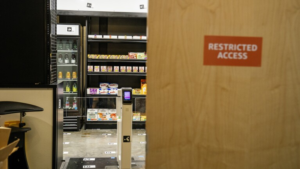Speed is the new currency. Gone are the days of waiting days (or weeks) for a parcel to arrive. Today’s shoppers expect lightning-quick fulfillment and super-fast delivery.
With speed and efficiency becoming the hallmarks of success, here are some of the trends reshaping the retail landscape in 2024.
The fast delivery transformation
Ultra-fast delivery skyrocketed during the COVID-19 pandemic, with orders being delivered to your doorstep within half an hour. While ultra-fast delivery has taken the backseat since, a recent study shows that speed should still be prioritized.
According to a survey by Fabric, three-quarters of consumers want free two-day shipping, while two-thirds would go for free next-day shipping.
E-commerce giants are increasing their networks to incorporate fast delivery. According to David Rand, one of the ways they’re doing this is “by opening new, highly automated, large fulfillment capacity warehouses in the markets they serve.”
1. Micro-distribution fulfillment centers
Amazon is staying ahead of the curve by operating from eight regional hubs. This practice leads to faster turnaround times since the retail giant can get items closer to shoppers.
Target is spending more than $100 million to expand its next-day delivery capabilities by 2026, while Walmart will be opening four next-gen fulfillment centers in Indiana, Illinois, Pennsylvania, and Texas.
Speaking to Rand, Avasant managing partner Joe Frampus says: “These retailers all use very detailed analytics. […] They’re able to say, ‘You know what? People are moving. So, let’s put something here and remove something from there.’ There’s a lot of that balancing going on right now.”
2. Redefining the last mile with robots
Drone delivery, too, is on the rise.
A logistics hub in Romania operated by Maersk and iB Cargo is on a quest to transform logistics through artificial intelligence (AI) and robotics. Meanwhile, Google’s Wing has reportedly made more than 330,000 deliveries in Virginia, Texas, and Australia.
GeekPlus’s RoboShuttle stands 40 feet tall, making it the tallest Mobile Automated Storage and Retrieval System (ASRS) on the market, and mobile robot evoBOT went on its maiden voyage at the Munich Airport in October last year.
ALSO READ: High-speed robot rolls out at Munich Airport
Other innovative concepts redefining the last mile are rideshare platforms, utilizing their networks of drivers as carriers of goods (and not just people anymore.)
Rand says: “Uber, Lyft, and DoorDash drivers have been delivering products to doorsteps for a while now. In fact, they’ve been diversifying and competing to pick up and drop off meals, groceries, and items from local stores.”
NOW READ: Drones lead Ireland’s last-mile delivery revolution
About the author
Cheryl has contributed to various international publications, with a fervor for data and technology. She explores the intersection of emerging tech trends with logistics, focusing on how digital innovations are reshaping industries on a global scale. When she's not dissecting the latest developments in AI-driven innovation and digital solutions, Cheryl can be found gaming, kickboxing, or navigating the novel niches of consumer gadgetry.












